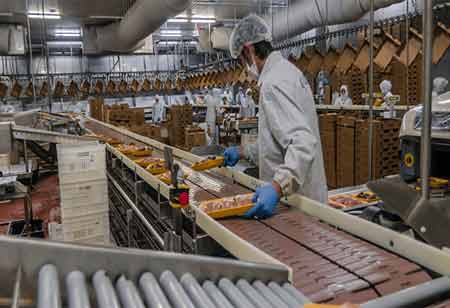Thank you for Subscribing to Food Business Review Weekly Brief
Historical Inventions Of Food Safety

By
Food Business Review | Wednesday, March 09, 2022
Stay ahead of the industry with exclusive feature stories on the top companies, expert insights and the latest news delivered straight to your inbox. Subscribe today.

Food scientists and researchers have discovered over 250 food-borne disorders worldwide.
Since the dawn of humans, people have desired ways to preserve food for consumption, opening by cooking food through an open fire and salting food to keep it as humanity advanced—some of the initial applications of the technology aid in food safety.
From the first case of technology and food safety coming together until the year 2021, the approaches to food safety have developed and improved greatly over the years. Below are some technological advancements that have altered the food safety landscape.
Blockchain
Blockchain technology is a rising technology that can impact food safety considerably but has not yet been completely realized. A blockchain is a scattered electronic ledger that securely records each transaction or block along its chain. Even though it is most often connected with Bitcoin, it also has applications in food safety.
Blockchain technology can securely track all stages of a food's journey using the supply chain, rising transparency. It can inform consumers regarding the shelf life of their food, how it was managed, and whether or not it is safe. This technology will be growing and used in the following years to ensure that the food people consume is as safe as possible.
Irradiation
Despite tight food manufacturing regulations, there is no assurance that food is safe and germ-free. The FAO (Food and Agriculture Organization) from the United Nations reports significant evidence that no amount of washing will eliminate all organisms from a specific food.
Irradiation is maybe the most important non-thermal invention in food safety. Food irradiation kills bacteria without causing damage to the product through electron beams, X-rays, or gamma rays. While high-energy beams do not influence food production, they harm the DNA of living beings and kill microorganisms. Irradiation has been demonstrated to effectively control germs such as E. coli on seed sprouts. When utilized in conjunction with other established food safety practices (e.g., washing, packaging, refrigeration, heat or chemical treatment, or freezing), irradiation can help ensure the quality and safety of food. Moreover, irradiation provides the following advantages over standard food safety practices:
- It does not considerably raise the temperature of the meal and hence does not "cook" it.
- Unlike freezing, it does not arise in the formation of ice crystals that change the texture of the meal.
- Concerning chemical treatments, it leaves no possibly hazardous residue.
- It can be used with food packaging to ensure that food remains contaminant-free following treatment.
Microwave Ovens
Today, The microwave oven is a "standard" appliance in most modern houses. For about three decades, commercial entities have used microwaves to sterilize and pasteurize manufactured goods, effectively eliminating germs and dangerous bacteria.
Refrigeration
From prehistoric times, humans have used refrigeration in various methods to preserve food. Consequently, refrigeration is possibly the most important advancement in food safety in history. Most foods can't be transported, eaten, or stored correctly without this cooling and freezing.






